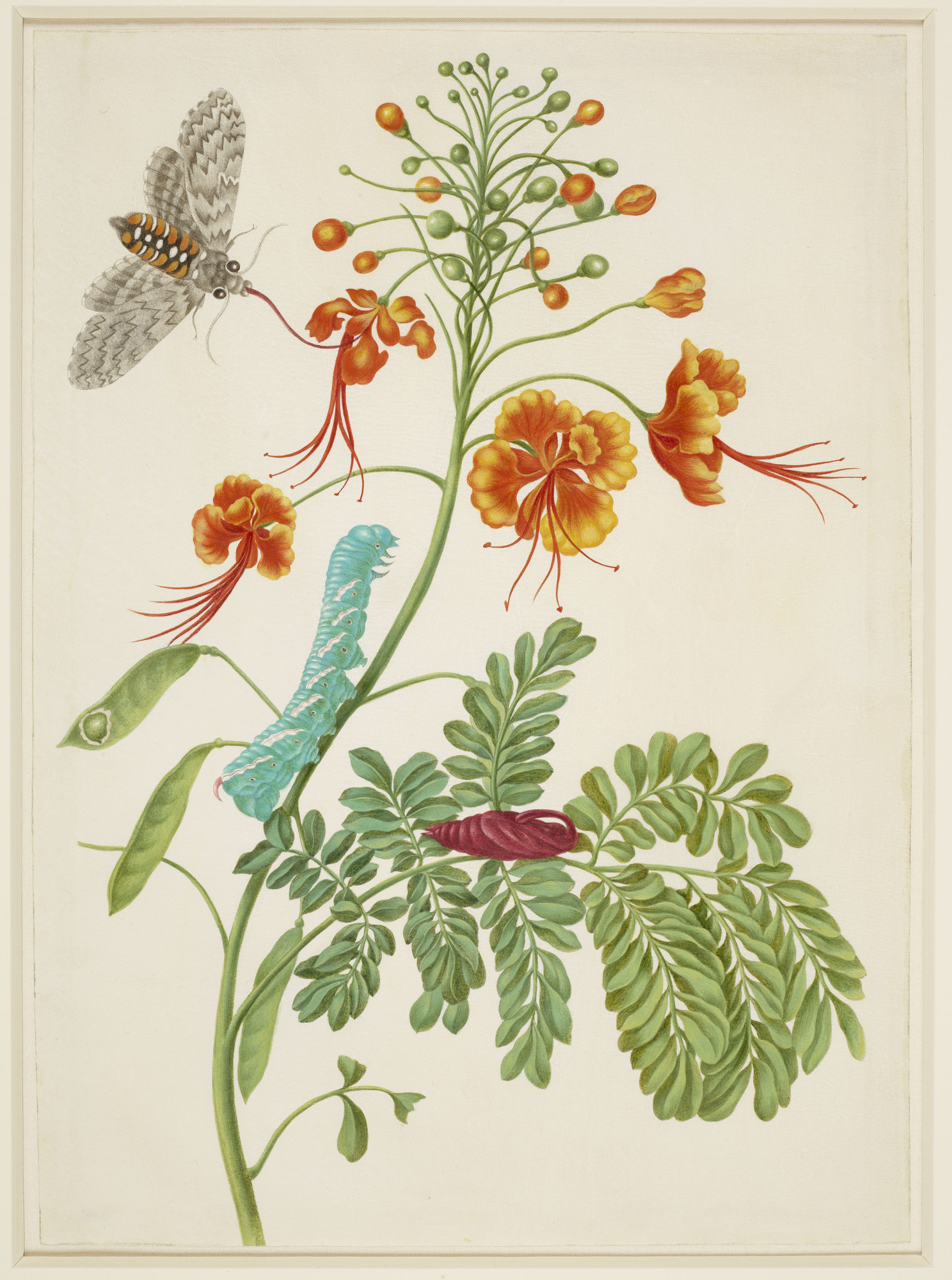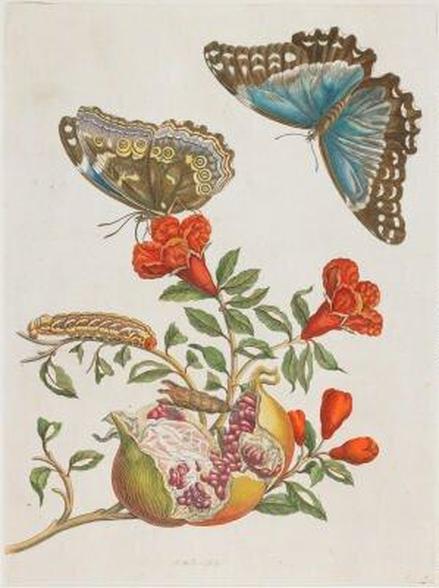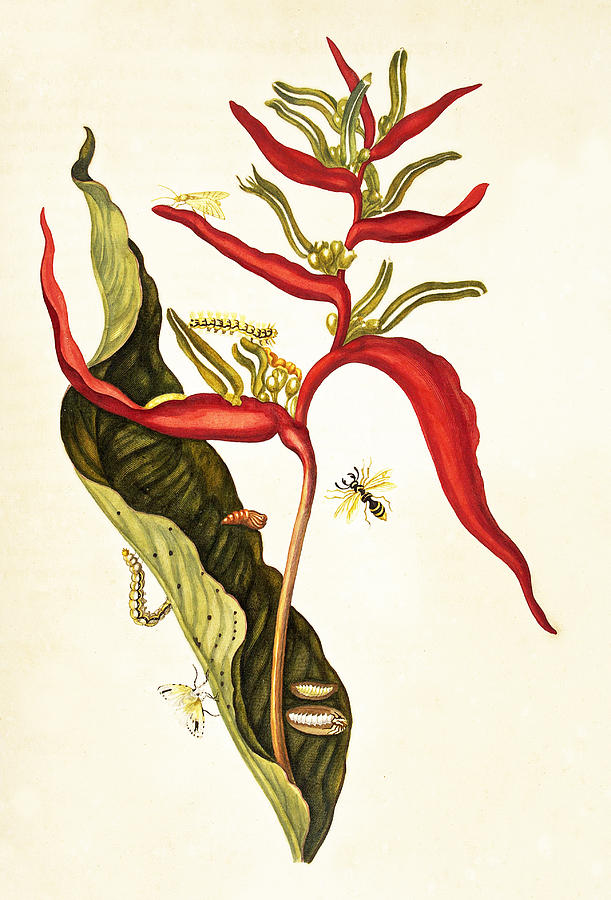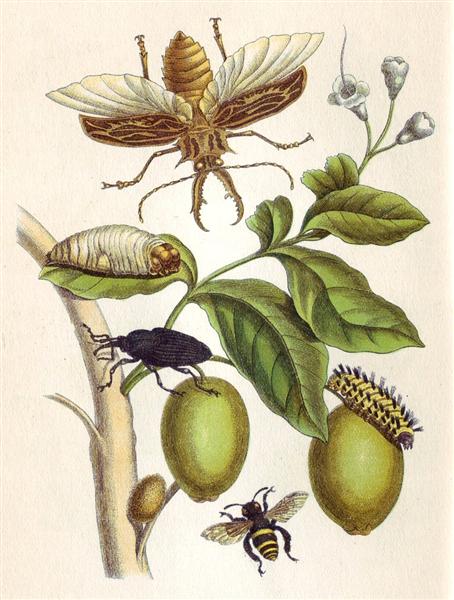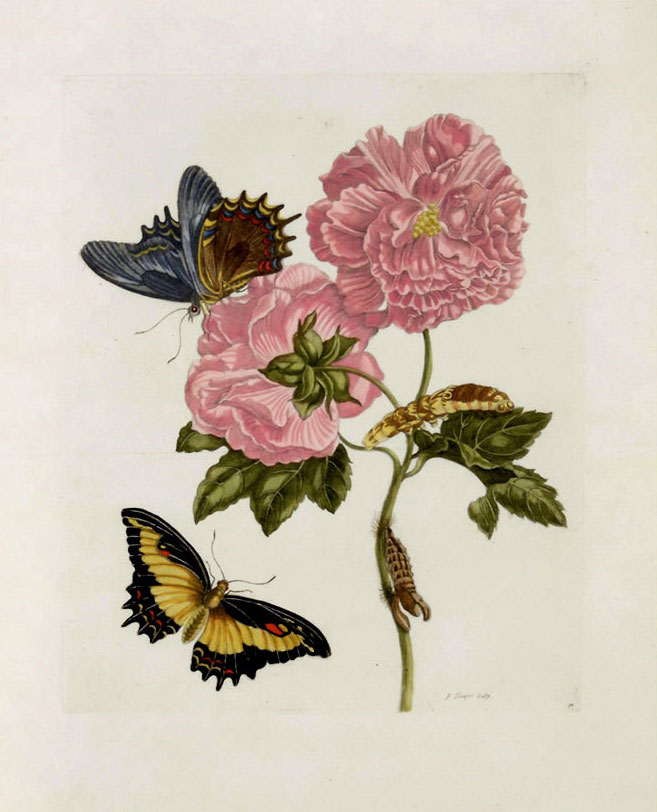Maria Sibylla Merian
Born April 2 1647 - Died January 11 1717
Dutch
Merian was born in 1647 to a family already steeped in natural history and art - so it’s no wonder Maria followed the path she did. Her father - Matthaus Merian - owned a print shop and published some of the most influential texts on natural history at the time. To keep it brief: She got married, moved, joined a religious commune, divorced her husband, moved again, travelled to Suriname and then back to Amsterdam again. All while pursuing her love - the life cycles of insects and everything else about them
Badass Reasons they should be remembered:
She pioneered the study of creepy crawlies. Yes those creepy critters that the closest I will ever study is to determine how large a shoe the job requires. Her list of firsts in this area is petty extensive and hella interesting - over her lifetime she documented the life cycle of at least 186 different species of insects. So impressive in face that I need to create sub points
She was the first person to study and publish the process of metamorphosis. Remember this was the 1600s - people thought that bugs spontaneously appeared and were linked to devil in various ways. And that clearly caterpillars and butterflies were separate things.
She was the first person to draws bugs in a scientific context from real life observations. This seems like a pretty logical thing but again apparently people hadn't really thought to do that, easier to stab them with a pin and then imagine how they work. This is also how she uncovered metamorphosis (see point 1.a), as it is much easier for a live caterpillar to turn into a butterfly. She was also the first person to study the plants that these bugs ate in addition to the actual bugs themselves.
But why is Merrian only just coming back into vogue and her contribution to Entomology formally recognised I hear you ask. I'll give you a hint - it mainly features the ego’s of Victorian era men. They dismissed her due to her femaleness and lack of formal education. The fact all her writing was in Dutch or German also didn’t help.
2. When you've divorced your husband (unusual in 1600) & you want to further your career what do you do? Jump on a ship to the other side of the world obviously. Merrian traveled 7,724 km, roughly two months, from Amsterdam to Suriname in 1699. Leaving the cosmopolitan life behind she took on a journey few dared. And even fewer females. She also didn't do it alone - her daughter Dorothea went along too. Even more impressively she financed the trip via a Government scholarship - which were definitely not just handed out to every lady who came along. Or basically any lady actually - science and trekking into unknown lands was not the done thing for any lady to do. And it was dangerous af for anyone to do full stop
3. She also ran the only known female only scientific drawing workshop of her day. They were a powerhouse - they described the life cycles of over 200 insects and frogs over the time it was active. The profits made from the plates helped fund her overseas trip as well.
4. She actually listened to the natives in Suriname - AKA the people the Dutch had taken into slavery. Unheard of for a colonial person at the time - she didn’t keep slaves while over there either, which is shocking for someone in her position at the time. In particular she references their knowledge of the medicinal properties of various plants - which is clearly something the locals had a ton of knowledge on. Interestingly she focuses a section of her book (Metamorphosis insectorum Surinamensium) to the peacock flowers (Caesalpinia pulcherrima) ability to induce abortions. Not just this however - her book also goes into details about the injustices the local population faced and why they turned to it.
“The Indians, who are not treated well by their Dutch masters, use the seeds to abort their children, so that they will not become slaves like themselves. The black slaves from Guinea and Angola have demanded to be well treated, threatening to refuse to have children. In fact, they sometimes take their own lives because they are treated so badly, and because they believe they will be born again, free and living in their own land. They told me this themselves.”
Pretty woke for a 1600s white lady.
Selected Works
Find Out More
Botanical Artists - As always a great site
New York Times - They do some solid work
The Lancet - A journal article
Chrysalis: Maria Sibylla Merian and the secrets of metamorphosis - This is a book & yes I went down quite a rabbit hole in this research.


